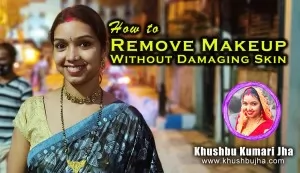Mastering Foundation: The Base of Every Professional Makeup Look
Discover the essential guide to Foundation in professional makeup. Learn about types, application tips, skin matching, and top industry recommendations.

In the world of professional makeup, foundation is the cornerstone upon which every stunning look is built. It creates a smooth, even canvas for all other cosmetics, correcting imperfections and enhancing natural skin tone. Whether it’s a red-carpet glam, a bridal masterpiece, or a corporate photo shoot, the right foundation makes all the difference.
What Is Foundation in Makeup?
Foundation is a skin-colored cosmetic product applied to the face to create an even, uniform complexion. It can conceal blemishes, discoloration, pores, and fine lines. The term encompasses a range of formulas — from light, breathable textures to heavy-duty, full-coverage products — catering to diverse skin types and finishes.
Types of Foundation
Different skin types and occasions require different types of foundation. Here are the most common ones:
1. Liquid Foundation
This is the most versatile and commonly used foundation. Suitable for dry to normal skin, it offers buildable coverage and can be easily blended with brushes, sponges, or fingers.
2. Cream Foundation
Known for its rich texture and high coverage, cream foundation is great for dry or mature skin. It offers a dewy finish and long-lasting wear, perfect for weddings or photoshoots.
3. Powder Foundation
Ideal for oily or combination skin, powder foundation gives a matte finish and light to medium coverage. It’s often used for touch-ups throughout the day.
4. Stick Foundation
Great for on-the-go application, stick foundations are easy to carry and quick to apply. They offer medium to full coverage and are suitable for normal to oily skin types.
For light, breathable coverage, these products combine skincare benefits with subtle pigment. They’re perfect for no-makeup makeup looks or daily wear.
Choosing the Right Shade
Selecting the correct foundation shade is critical. Professionals usually match foundation by testing a small amount on the jawline in natural light. A perfect match will disappear seamlessly into the skin. Undertones also matter — whether your skin leans warm, cool, or neutral, it affects how the foundation looks on your face.
How to Apply Foundation Like a Pro
To achieve a flawless finish, application matters as much as the product itself. Here’s a step-by-step guide:
- Prep the Skin: Cleanse and moisturize the skin. Use a primer to create a smooth base and ensure longevity.
- Apply in Thin Layers: Start with a small amount and build coverage gradually. Use a beauty blender, foundation brush, or fingertips depending on the desired finish.
- Blend Thoroughly: Buff the foundation from the center of the face outward, blending into the hairline, ears, and neck for a seamless look.
- Set It: Use a setting powder or spray to lock the foundation in place and reduce shine, especially in the T-zone.
Professional Tips for Long-Lasting Foundation
- Use a color corrector for intense discoloration before applying foundation.
- Layer a setting spray between foundation layers for extended wear.
- For HD or on-camera makeup, choose foundations with no SPF to avoid flashback.
- Use a damp beauty sponge for a natural, airbrushed finish.
Popular Foundation Brands for Professional Use
- MAC Studio Fix Fluid
- Estée Lauder Double Wear
- Make Up For Ever HD Foundation
- Fenty Beauty Pro Filt’r
- NARS Natural Radiant Longwear
- L’Oréal Infallible 24H Matte Cover
Foundation for Different Skin Types
Understanding your client’s skin type helps you select the best formula:
- Oily Skin: Matte, oil-free, long-wear formulas.
- Dry Skin: Hydrating or dewy finish foundations with hyaluronic acid or oils.
- Combination Skin: Balancing formulas with satin finish or hybrid textures.
- Sensitive Skin: Fragrance-free, hypoallergenic options with calming ingredients.
When to Use Full Coverage vs. Light Coverage
Full coverage foundations are suitable for events requiring heavy photography, like weddings and stage performances. Light or medium coverage is better for daily wear or minimalist styles where the natural skin texture is embraced.
Foundation Mistakes to Avoid
- Skipping skin prep, which causes patchy foundation.
- Using the wrong shade or undertone.
- Applying too much product at once.
- Not blending into the neck and jawline.
Final Thoughts
Mastering foundation is essential for any professional makeup artist or enthusiast. It’s not just about covering flaws — it’s about enhancing beauty with precision and care. With the right foundation, everything from subtle looks to dramatic transformations becomes possible. Investing in the right product and technique will elevate your makeup artistry to new heights.













